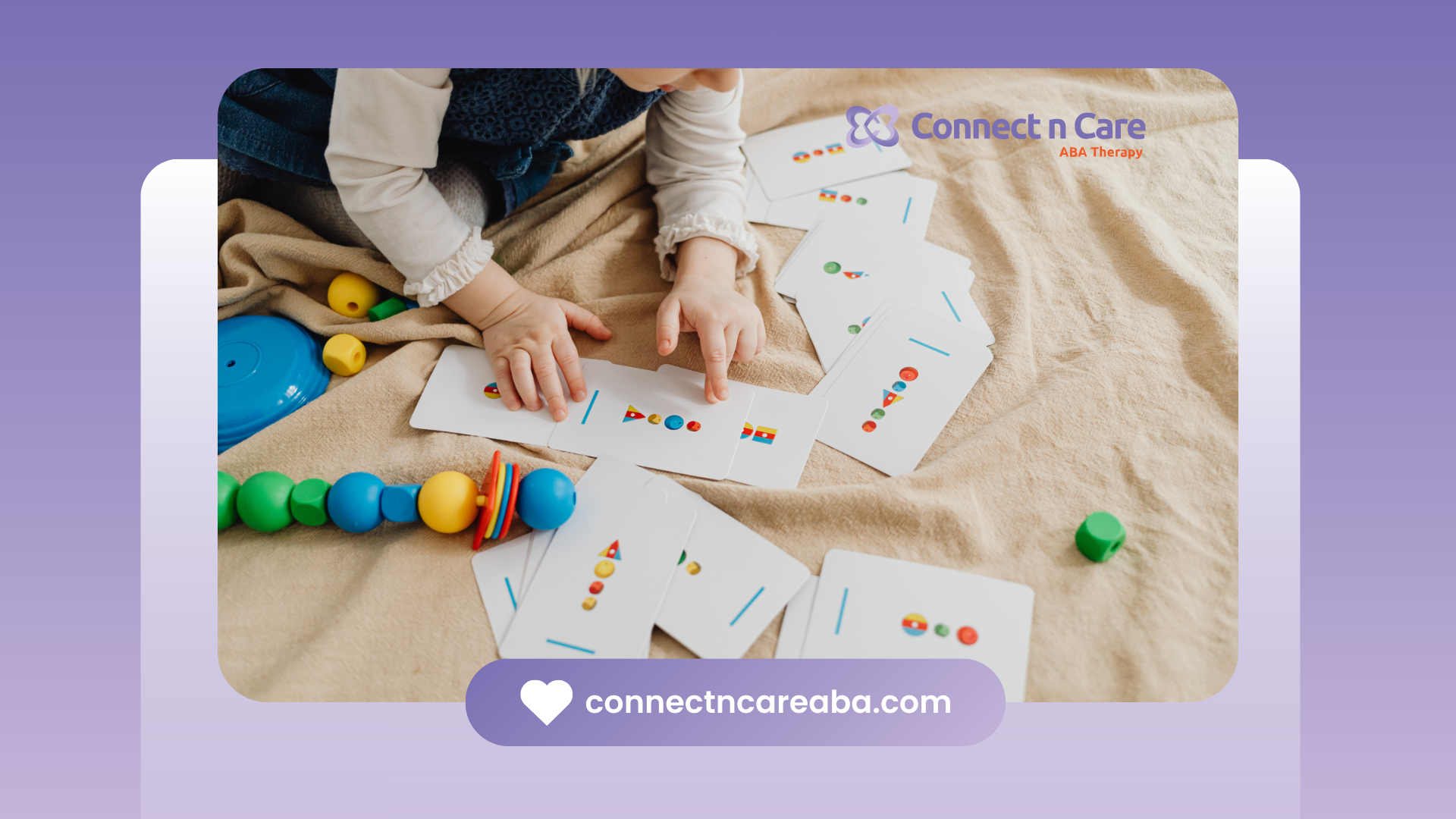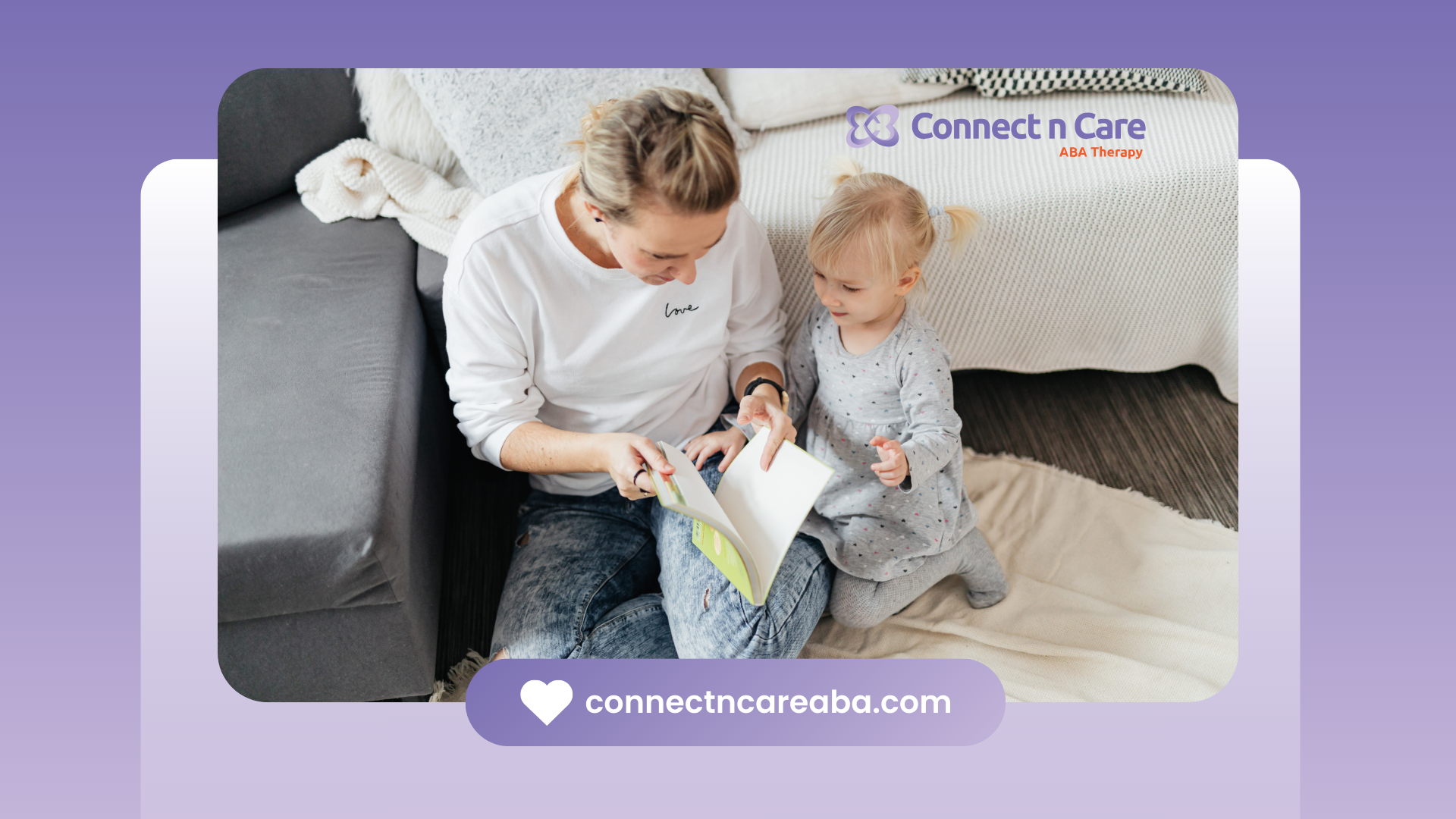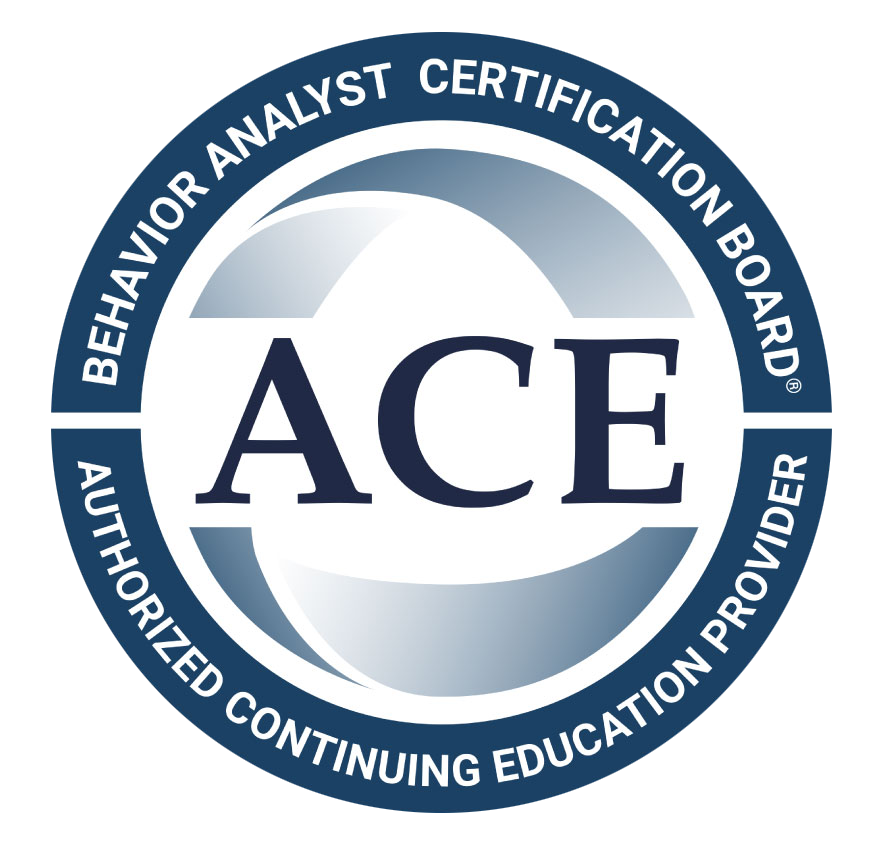When you think of Applied Behavior Analysis (ABA) therapy, you might focus on its success in improving communication and daily living skills for children on the autism spectrum. However, a significant but overlooked benefit is its profound impact on fostering creative thinking. Creativity is more than artistic talent; it's the ability to solve problems in new ways and adapt to different situations. This guide explores how ABA therapy can unlock your child's innovative potential and support their long-term development.
Understanding ABA Therapy and Creativity in Children
Applied Behavior Analysis (ABA) therapy is widely recognized for its structured approach to skill development. But can a structured therapy truly foster something as free-flowing as creativity? The answer is a resounding yes. Modern ABA therapy integrates techniques that encourage imaginative thought and self-expression.
For children with Autism Spectrum Disorder (ASD), developing creative skills is a vital part of overall child development. It helps them think flexibly and find unique solutions to challenges. Let's look at what ABA therapy is, its connection to creativity, and some common myths.
What is ABA therapy?
Applied Behavior Analysis is an evidence-based therapy that uses the principles of behavior analysis to teach meaningful skills. Therapists have used ABA to help children with autism and related developmental disorders since the 1960s. It’s considered a best practice treatment by the U.S. Surgeon General and the American Psychological Association due to its proven effectiveness.
During therapy sessions, complex skills are broken down into smaller, manageable steps to facilitate skill acquisition. Research shows that intensive ABA therapy has a high success rate, with many children showing significant improvements in IQ, communication, and language skills.
The goal of ABA is to help individuals gain skills to increase their independence and quality of life. This is achieved through carefully designed interventions that are tracked with data to ensure progress is being made toward the child's specific goals.
The link between creativity and child development
Creative thinking is a cornerstone of child development. It’s not just about drawing or painting; it's a fundamental cognitive skill that allows children to approach challenges from multiple perspectives and adapt to new situations. Nurturing creative expression is essential for your child's overall development.
When children engage their creativity, they build more than just artistic abilities. They also develop crucial cognitive and emotional skills. This can lead to:
- Improved problem-solving abilities
- Enhanced emotional regulation and expression
- Greater cognitive flexibility
This ability to generate unique ideas is often referred to as "divergent thinking." Interestingly, research suggests that individuals on the autism spectrum often excel at this type of thinking, producing fewer but more unusual and original ideas when faced with a creative task.
Common misconceptions about ABA and creative growth
A common concern among parents is that the structured nature of ABA therapy might stifle a child's creative growth. Some worry that it focuses too much on compliance and repetition, leaving little room for imagination. This view, however, is based on outdated perceptions of ABA.
Contemporary ABA therapy is dynamic and highly individualized. Quality practitioners understand that every child on the autism spectrum has unique needs and strengths. The structure provided in therapy is not meant to be rigid; instead, it creates a secure foundation from which your child can safely explore and experiment.
Modern ABA emphasizes skill-building and independence, not just compliance. The goal is to empower your child with the tools they need to navigate the world confidently. This includes fostering the creative thinking skills necessary to solve problems and express themselves in their own unique way.
How ABA Therapy Supports Creative Thinking
So, how exactly does ABA therapy cultivate creative thinking? It does so by implementing structured approaches that foster flexible thinking and inventive problem-solving skills. Through techniques that encourage imaginative play and emotional expression, ABA provides a framework for creativity to flourish.
Rather than limiting a child, these methods build the foundational skills needed for creative exploration. Below, we'll examine specific ways ABA therapy nurtures your child's ability to think outside the box, from structured play to promoting cognitive flexibility.
Encouraging imagination through structured play
Structured play is a powerful tool used in ABA therapy sessions to unlock a child's creative potential. It provides a safe and predictable environment for children to practice imagination and symbolic thinking. For example, pretend play allows a child to represent one object as another, building essential abstract thinking skills.
These playful and imaginative activities nurture both social skills and empathy, which are crucial for problem-solving in social situations. Through structured play, children can practice several critical skills at once:
- Social creativity: Role-playing scenarios teach children to anticipate responses and adapt their behavior.
- Emotional expression: Creative play offers a safe outlet for exploring and communicating feelings.
By engaging in activities like storytelling and role-play, your child can rehearse different scenarios and outcomes in a low-pressure setting. This process builds their confidence and encourages them to experiment with new ideas and behaviors, tapping into their natural creativity.
Promoting cognitive flexibility with ABA techniques
Cognitive flexibility, or the ability to switch between different concepts and adapt your thinking, is fundamental to creativity. Many children with autism find comfort in routines, which can sometimes lead to rigid or repetitive behaviors. ABA techniques can be instrumental in fostering more flexible thinking.
ABA therapists help diminish reliance on rigid routines by gradually introducing varied activities across different settings. This process helps children learn to embrace variability and adapt to unexpected changes. Instead of becoming a source of stress, change becomes an opportunity for new learning and skill development.
Building this mental agility is necessary for creative exploration. When a child learns to shift their thinking, they are better equipped to see problems from different angles and generate innovative solutions. This skill not only supports creativity but also improves their ability to navigate the complexities of everyday life.
Facilitating self-expression and problem-solving
Creative activities provide a powerful platform for facilitating self-expression and problem-solving. In ABA therapy, a child might be prompted to think of different ways to get a toy that is out of reach, such as asking for help or finding a stool. This everyday scenario becomes a mini-laboratory for creative problem-solving.
This approach helps children develop crucial communication skills and emotional regulation. By encouraging them to explore and express their feelings through creative outlets, therapists provide a safe space for emotional growth. Learning to identify and implement diverse coping strategies is a form of creative problem-solving that directly impacts one's well-being.
Ultimately, these exercises are about more than just finding a solution. The goal is to foster a natural curiosity and an understanding of the problem-solving process. These essential skills in social skills and self-expression can then be carried over into other areas of the child's life, boosting their confidence and independence.
Integrating Creative Activities into ABA Sessions
ABA therapy is highly adaptable, making it easy to integrate a wide range of creative activities into sessions. These activities are not just for fun; they are carefully chosen to support specific goals related to skill development, emotional expression, and cognitive growth. By making learning enjoyable, children are more motivated to participate.
From arts and crafts to music and movement, these creative outlets offer diverse ways for your child to learn and grow. The following sections will explore how different creative activities can be woven into ABA therapy to inspire innovation and boost development.
Arts and crafts as a part of ABA therapy
Arts and crafts are a fantastic way to incorporate creativity into ABA therapy. Activities like drawing, painting, and building with blocks stimulate a child's imagination while also targeting important developmental skills. These art activities offer a non-verbal means of artistic expression, allowing children to communicate ideas and emotions.
Engaging in art projects can also help improve fine motor skills. For example, stringing beads or holding a paintbrush builds hand-eye coordination and dexterity. An ABA therapist can use these activities to work on following instructions, making choices, and seeing a project through to completion.
Here are some examples of how arts and crafts support skill development in ABA therapy:
| Creative Activity | Skill Developed |
|---|---|
| Drawing or Painting | Self-expression, color recognition, fine motor skills |
| Building with Blocks | Problem-solving, spatial reasoning, imaginative play |
| Stringing Beads | Pattern recognition, hand-eye coordination, focus |
Using music, dance, and movement to inspire innovation
Music, dance, and movement are excellent tools for inspiring creative expression within ABA sessions. Incorporating music therapy techniques can enhance emotional regulation, social connection, and communication. These activities are naturally engaging and can be easily adapted to a child's preferences.
Movement-based activities also help develop gross motor skills and body awareness. An ABA therapist might use rhythmic exercises or dance to teach imitation, turn-taking, and following directions in a fun and dynamic way. This provides a multi-sensory learning experience that can be highly motivating.
Here are a few ways music and movement are used:
- Musical improvisation: Encourages spontaneity and builds emotional skills.
- Singing songs: Improves language, memory, and social interaction.
- Movement games: Enhance coordination, listening skills, and cooperation.
Play-based learning for boosting creativity
Play-based learning is a cornerstone of modern ABA therapy, creating a natural and enjoyable learning process for your child. This approach uses interactive play to teach new skills and encourage creative thinking. Instead of drills, learning happens within the context of a fun activity that captures your child's interest.
When a child is engaged in play, they are more motivated to explore, experiment, and solve problems. A therapist might use a storytelling game to work on language skills or a building challenge to foster collaboration and innovation. This makes therapy feel less like work and more like fun.
By centering the learning process on your child's natural desire to play, therapists can effectively boost creativity. This method promotes spontaneous thinking and helps children generalize their skills to real-world situations, as they learn to apply what they've learned during interactive play to their everyday life.
Tailoring ABA Programs for Creative Development
Effective ABA programs are never one-size-fits-all. To foster creative development, treatment plans must be carefully tailored to each child’s unique strengths, interests, and needs. This personalized approach ensures that therapy is both motivating and impactful, turning a child's natural curiosity into a powerful learning tool.
By building on what a child already enjoys, therapists can design interventions that feel less like therapy and more like an exciting exploration. Let's look at how individualization, creative reinforcement, and collaboration come together to nurture your child's creative spirit.
Individualizing sessions to nurture each child’s strengths
One of the most important aspects of modern ABA therapy is the creation of individualized plans. Children on the autism spectrum have a wide range of abilities and interests, and effective ABA interventions are designed to honor these unique needs. A therapist will conduct detailed assessments to understand your child's profile before developing a plan.
This means focusing on your child’s interests to make learning more engaging. If your child loves dinosaurs, a therapist might use dinosaur-themed games to teach new concepts. This child-led approach boosts motivation and makes therapy a positive experience.
Individualization involves:
- Basing interventions on a child's specific motivations and interests.
- Adapting activities to match your child's developmental level.
- Focusing on building your child's strengths, not just addressing challenges.
Creative reinforcement strategies in ABA
Positive reinforcement is a core component of ABA, but it's not just about rewarding "correct" answers. Creative reinforcement strategies focus on celebrating the process of thinking differently. When a child receives praise for trying a novel approach to a problem, they learn that thinking outside the box is valued.
For example, if a child finds an unconventional way to complete a puzzle or build a tower, a therapist would acknowledge that creative effort. This type of reinforcement boosts motivation and confidence, encouraging your child to take intellectual risks and experiment with new ideas.
The goal is to foster a natural curiosity and a willingness to explore. By breaking tasks into manageable steps and reinforcing creative attempts along the way, ABA techniques help build a strong foundation for innovative thinking that your child can apply in all aspects of life.
Collaborative approaches with art therapists and educators
Creating a supportive environment for creative growth often involves collaboration. Many ABA programs now work alongside professionals from other disciplines, such as art therapists, music therapists, and educators, to provide a holistic approach to your child's development.
This collaboration ensures that creative goals are integrated across all settings, from the therapy clinic to the classroom and home. For instance, an ABA therapist might consult with an art therapy specialist to design art projects that target specific communication or social skills. This enriches the therapeutic experience and provides more avenues for expression.
Working together, ABA therapists, educators, and other specialists can create a cohesive and nurturing ecosystem around your child. This teamwork ensures that everyone is aligned in celebrating your child's unique way of thinking and reinforcing their creative efforts consistently.
Measuring the Impact of Creativity in ABA Therapy
Just like other skills in ABA therapy, creative growth can be observed and measured. While it might seem abstract, progress in creativity is tracked through careful observation and data collection. Therapists look for specific changes in a child’s behavior and approach to tasks that indicate growth in their creative thinking abilities.
This measurement is crucial because creative progress has a direct impact on a child's overall development and quality of life. The following sections describe the signs of creative growth and how these advancements enhance developmental outcomes for your child.
Signs of creative growth in children with autism
As your child participates in creative activities within ABA therapy, you can watch for observable signs of progress. This growth isn't just about becoming a better artist; it’s about developing flexible and innovative thinking patterns. These new creative abilities often emerge alongside improvements in skill acquisition and communication skills.
You might notice your child generating more ideas during open-ended play or offering more detailed and imaginative stories. These are clear indicators that their creative thinking is expanding. Another sign is a greater willingness to experiment and take risks without fear of making a mistake.
Observable signs of creative growth can include:
- Increased ideational fluency: Generating a larger number of ideas.
- Greater originality: Coming up with more unique and unconventional solutions.
- Improved elaboration: Providing more detailed and sophisticated ideas.
How creative progress enhances overall developmental outcomes
The development of creativity has a ripple effect, positively influencing overall developmental outcomes. The cognitive skills strengthened through creative practice—like problem-solving and flexible thinking—are essential skills that apply to academic, social, and personal challenges. This skill development contributes significantly to a child's long-term success.
As children become more confident in their creative abilities, they are better equipped to learn new skills and navigate social situations. For example, creative problem-solving can help a child find new ways to initiate friendships or resolve conflicts with peers, improving their social connections and quality of life.
Ultimately, fostering creativity helps children become more resilient and independent. The ability to generate multiple solutions to a problem builds psychological flexibility, empowering them to adapt to life's challenges. These gains in cognitive function, language, and daily living skills create a strong foundation for a fulfilling future.
Conclusion
In conclusion, ABA therapy has a remarkable ability to nurture creativity in children, fostering an environment where imagination and self-expression can thrive. By integrating creative activities into sessions and tailoring approaches to each child's unique strengths, therapists can make a significant impact on a child’s overall development. The benefits extend beyond just creative growth; they enhance problem-solving skills, cognitive flexibility, and emotional expression, leading to well-rounded development. If you want to learn more about how ABA therapy can cater to your child’s creative needs, don’t hesitate to reach out for a free consultation with our experts. Your child's journey to creativity awaits!
At Connect n Care ABA, we know that creativity thrives when children feel supported, confident, and understood. Our team uses ABA therapy to encourage imaginative thinking, exploration, and self-expression in ways that feel natural and enjoyable. By blending structured learning with playful, child-led activities, we help children discover new interests, build problem-solving skills, and express their unique ideas. At Connect n Care ABA, we don’t just teach skills—we nurture the creative spark that helps every child shine in their own remarkable way.
FAQs
Can ABA therapy realistically foster creativity in children with autism?
Yes, absolutely. Modern ABA therapy uses child-led, play-based techniques within therapy sessions to nurture the creative potential in children with autism spectrum disorder. By creating a supportive environment and focusing on individual interests, ABA encourages flexible thinking and creative expression, proving that structure and creativity can go hand in hand.
What types of artistic activities are most effective in ABA session?
Effective creative activities in ABA sessions are those that align with a child's interests. Popular options include art projects like drawing and building, which aid skill development. Music therapy, storytelling, and role-playing are also highly effective for boosting engagement, communication, and imaginative thinking.
Are there specialized ABA programs in the US that focus on creativity?
Yes, many modern ABA programs in the US emphasize creative development. Rather than being a separate specialty, this focus is integrated into high-quality, individualized treatment plans. These programs tailor interventions to a child’s interests, building on their natural curiosity to foster both essential skills and creative growth.
Sources:
- https://www.autismspeaks.org/applied-behavior-analysis
- https://www.cdc.gov/autism/about/index.html
- https://www.autismawareness.com.au/aupdate/the-power-of-play-based-learning-for-autistic-children









